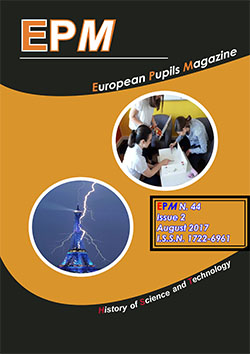Math Science Chemistry Economics Biology News Search
In the following years a long series of discoveries of particle until then unknown began; in 1932 James Chadwick discovered the neutron experimentally; successively Carl David Anderson discovered the antiparticle of the electron, the positron. With the study of natural radioactivity of Henri Becquerel the scientists began to doubt of the elementariness of the proton and neutron. In fact in the beta decadence the atom emits bands of electron from the nucleus. To explain this phenomena Enrico Fermi introduced the existence of another particle, the neutrin, found experimentally by Fred Reiners and Charles Cowan.
In 1937 the muon was discovered with a mass about 200 times bigger than that of the electron and with a negative charge.
Around 1963 the physical Murray Gell-Mann and George Zweig supposed that the proton and the neutron were composed by quarks (particle with a factional charge, which couldn’t exist individually because of the strong attraction); these hypotheses were confirmed later by the results obtained from the particles accelerator of the CERN, in Genève.
The quarks, which have been found so far are six: d (down), u (up), s (strange), c (charm), b (bottom), t (top).
The proton is composed by two quarks u and one d; the neutron is composed by two quarks d and one u.
Actually it is thought that all the universe is ruled by four fundamental forces: the strong nuclear force, which is manifest in the nucleus among the quarks; the weak nuclear force, which is seen in the nuclear reactions or in the radioactive decadence; the electromagnetic force, which is observed in the atom since it binds the electrons to the nucleus; the gravity force, which is manifest in the planetary system and in the fall of the bodies. Following this theory the interactions among the particles take place thanks to the exchanges of energy, that is of the quanta, to which the name of mediating particles is given.
Following the theories and the discoveries of the last forty years the scientists arrived to a model, called Standard Model, which explains that the elementary particles of all the matter present in the universe are assemble able in three families: the leptons (elementary particles which include the electron, the muon, the tau and their corresponding neutrins); the quarks and the mediating particles (graviton, photon, gluon, meson and intermediate boson vectors).
Even if this model seems very detailed, it has some imperfections. In fact, it can only link the electromagnetic force with the weak nuclear force. Scientists are trying to include that strong nuclear force through some experiments, but they aren’t able to insert the gravity force, because they have not found its mediating particle (the graviton).
This model suggests that the particles have all the same speed of the light, property that really isn’t noticed, therefore they suppose the presence of an other kin of particle, called Higgs’s boson, not yet proved experimentally, but that they expect to find it out in the Large Hadrons Collider, in Genève.
Another modern much accredited theory is the theory of the laces, which suggest that all the elementary particles are composed by equal laces or strings, with the only difference in the kind of vibration, which defines the properties to the particle itself. The vibration doesn’t take place in a three-dimensional kind of space, but can also arrive to nine dimensions, plus the time dimension. There are some other slightly different theories, though. Nowadays these theories aren’t considered convincing and are object of many doubts.
The models always come from the intuition of some scientists and are considered valid so far as they are able to explain the observed phenomena. When later, because of other discoveries, they are no longer satisfactory, the model is elaborated again, sometimes even radically as the case of the passage from the classic physics to the quantum physics, so that it is nearer to the new reality. No model can therefore be considered final and the new continuous discoveries demand the formulation of more and more complex models.
Bibliography
Iconography


